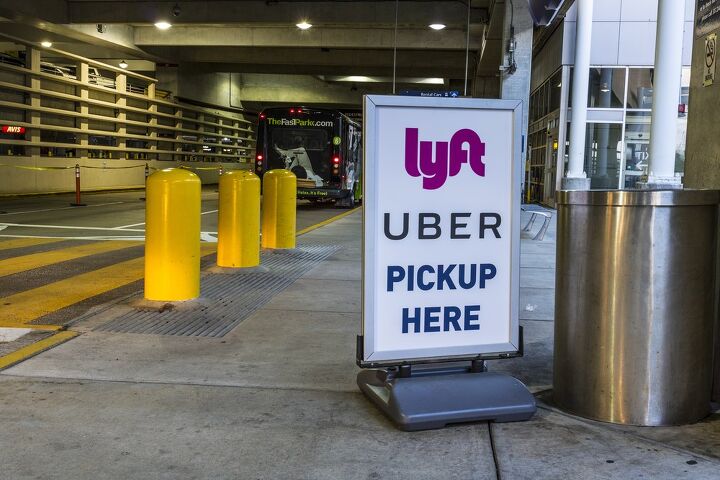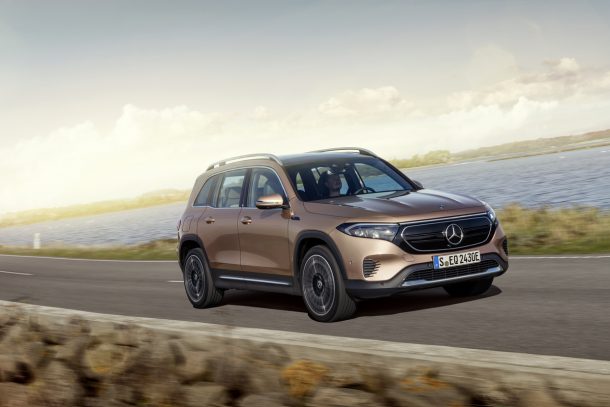#Traffic
QOTD: Where Have You Encountered the Worst Traffic?
Matt wrote earlier about 15-minute cities by featuring plans being made in Cleveland. The purpose of these cities is basically to set up neighborhoods so that anything residents want or need is within a 15-minute walk -- thus reducing automobile traffic.
Driving Dystopia: Companies Are Getting Serious About Vehicle-to-Infrastructure Connectivity
Before connected vehicles had become ubiquitous, numerous companies suggested that they would be networked into roadway infrastructure to improve safety and decrease traffic congestion. The concept even became a keystone issue for lobbyists trying to convince lawmakers to create regulations favorable to autonomous cars.
But it never manifested due to just how ambitious the overarching concept happened to be. The relevant technologies were still in their infancy and would require years of collaboration between multiple industries and various government agencies before anything got off the ground. However, things are reportedly starting to change. Pilot programs are being implemented on public streets, companies are working on the necessary hardware, and the U.S. government is asking for more with cash in hand.
NHTSA: Traffic Deaths Fell Slightly in 2022, but Are Still Elevated
When the pandemic shut down the world, some people took the opportunity to start driving like lunatics. With fewer people on the road, many of the few brave souls behind the wheel began speeding more, which ultimately led to a significant jump in speed-related deaths in 2020. Things appear to be cooling off, as recent data from National Highway Traffic Safety Administration (NHTSA) show a slight decline in traffic deaths during the first nine months of last year.
Oxford Introducing Traffic Restrictions for Privately Owned Cars After 2023
In England, the Oxfordshire County Council has introduced a new traffic scheme it believes will clear up roadway congestion, improve pedestrian safety, and also address climate issues. However, the plan involves prohibiting where residents of Oxford can drive (unless they have the proper paperwork) by breaking the city into six zones. Predictably, the concept has proven to be wildly unpopular with some of the locals.
Over the last week, residents have been up in arms about the scheme and it’s not difficult to see why. According to the Oxfordshire County Council’s own website, “traffic filtering” involves stopping vehicles from moving through selected checkpoints by leveraging a network of preexisting automatic number plate recognition (ANPR) cameras. While locals will be eligible to purchase permits that will allow them to drive between the zones “up to 100 days per year,” exceeding this limit will result in fines.
U.S. Congress Holds Hearing on Increased Traffic Deaths
A U.S. House of Representatives subcommittee conducted a hearing to discuss surging traffic deaths on Wednesday. In 2021, traffic deaths surged by over 10 percent over the previous year for a grand total of 42,915 roadway fatalities. But 2020 also represented a sizable 7 percent increase over 2019, despite there being overwhelming evidence that substantially less driving was done during nationwide COVID lockdowns.
Congresswoman Eleanor Holmes Norton (D-D.C.), the Transportation and Infrastructure subcommittee chair holding the hearing, stated that now was the time to hold a meeting on the issue — as last year represented the single highest increase in traffic deaths since the NHTSA started keeping track in 1975.
What Ever Happened to the U.S. People's Convoy?
It’s been a while since we’ve covered the trucking protests and you might be wondering what happened with the U.S. People’s Convoy that emerged from the still-smoldering ashes of the Canadian Freedom Convoy. Well, it’s been circling Washington, D.C. for the last several weeks in the hope it can draw sufficient attention.
Unlike the Canadian-based convoy, which saw the government deploy armed men to clear demonstrations taking place in front of Ottawa’s Parliament Hill, the Americans have remained mobile to avoid getting cornered by authorities. Stationed out of Hagerstown Speedway in Maryland, truckers have established a base of operations where they can service vehicles whenever they’re not on the Beltway protesting. Drone shots from above have indicated that there are usually a few hundred trucks parked at the racetrack each morning, though videos from inside show evening returns including hundreds more supportive passenger vehicles. While journeys into the city do take place, they typically involve a handful of trucks designed to make some noise before quickly retreating to avoid being penned in.
Captain Obvious Returns: Studies Say Ride-Hailing Apps Cause Pollution
As luck would have it, hiring thousands of drivers to cruise around a city in search of their next fare has some negative environmental impacts. That’s the word coming from expert researchers at Carnegie Mellon University, who we can only hope are prepared to tackle similarly impossible quandaries — like establishing what happens to an object when it’s dropped or reaching a final determination on the wetness of water.
The study is inextricably linked to one we covered in 2018 asserting that ride-hailing services actually created more traffic congestion because it treads extremely familiar ground and seems like something that we should have already figured out on our own. But it’s also at odds with the years of messaging we’ve gotten from technology firms that have promised on-demand services (like Uber or Lyft) would usher in a new era of urban transportation striving for clearer roads and cleaner air. Based on little more than the conjecture of executives, we’ve generally accepted ride-hailing as “greener” than the alternatives and it’s well past time that we started actually thinking about it.
Vehicle Miles Traveled On The Rise Again
In March, vehicle miles traveled (VMT) rebounded to pre-pandemic levels. According to the Auto Care Association, this was the first month since August 2019 that VMT topped 300 million miles. To give you some perspective, the distance between the earth and the moon is only 238,856 miles, according to Wikipedia.
Study: U.S. Driving Distances May Have Already Peaked, What About Ownership?
North America has changed immensely under the pandemic. The government tested what it could get away with under the premise of health-and-safety-related lockdowns; countless small businesses have gone belly up while larger entities seem to be thriving. Meanwhile, we’ve been informed that nature is returning to urban environments as humanity forced itself to stay indoors. Waters cleared, the air was purified, and animals ventured deeper into our territories while we sheltered in place. It was if Homo Sapiens had finally been demolished, providing Mother Earth a prime opportunity to patch herself up.
For a time, there was even a period where you could enjoy open, nearly enforcement-free roadways. Some cities, including mine, saw traffic declines in excess of 40 percent during the opening weeks of the virus response. While this ended when New York City brought in those temporary (and wildly unpopular) quarantine checkpoints at major crossings and attempted to open up for commerce, it still seems like far fewer individuals are driving overall.
That’s because there are. People just don’t need to venture out of their homes as much in 2020 and it is not just the lockdowns contributing to this change. Ordering items online has played a major factor, as does the increased reliance on at-home entertainment. In fact, a new study has suggested Americans may never drive as much as they did just a decade ago. This seems especially likely with so many companies encouraging office-based employees to continue working from home indefinitely, flushing millions of daily commutes down the proverbial toilet.
You're All Driving Quite a Bit These Days
Without getting into the thick, tangled weeds of various coronavirus-related controversies, let it be known that, in some states, the streets and highways have returned to traffic levels seen before “lockdown” became common verbiage.
Yes, a good many of you are really putting miles under your belt (and tires). It’s summer, it’s hot, and lockdown measures are mainly a thing of the past, despite the rising levels of COVID-19 reported in regions that initially escaped the worst of the initial wave. But just how much are you driving?
Traffic Deaths in the Age of COVID-19 Run the Gamut
It’s hard to peruse local headlines these days without stumbling across a post or two detailing recent speeding infractions, with the ticketed drivers apparently taking advantage of traffic-free roads and bargain basement gas to see what dad’s Accord can really do.
It makes sense that some drivers would see a pandemic as an opportunity. Generally, vastly fewer vehicles on the roads leads to fewer deaths on those roads, but that’s definitely not true everywhere.
Silver Linings: COVID-19 Thinning Traffic Across the Country
Road traffic across the United States is dropping drastically, thanks to social-distancing efforts taking place to combat the spread of the novel coronavirus. For yours truly, traffic in New York City has gone from frequently hectic to downright pleasurable and relaxed. While there’s a statewide initiative in place to keep residents in their homes, the days leading up to the shelter-in-place order saw a decline in roadway activity I’d only previously witnessed during Hurricane Sandy.
According to INRIX, a Washington-based firm providing traffic analytics, road use in the United States dropped by about 30 percent last week — with regions affected by state-mandated shutdowns seeing even larger declines. The study compares the national traffic volume from the 14th to the 20th of March to volumes recorded between the 22nd and the 28th of February — noting that March 13th was the first day traffic started trending downward in most regions. Moving forward, INRIX says it wants to continue offering up a weekly synopsis of national traffic volume until the health crisis ends.
Chicago Considers Congestion Charges, Starting With Uber/Lyft
Chicago is considering sticking ride-hailing services like Uber and Lyft with a new tax that would add a few bucks onto each ride. Mayor Lori Lightfoot has proposed a $40-million-per-year tax increase as part of a broader traffic plan modeled after London’s famous congestion fines. That means not all rides would be subject to the same fees, but each trip taken within the city would still cost a little extra.
While congestion charges are all the rage in Europe, they’re uncommon in the United States. New York City recently decided to financially penalize every driver taking a trip below 60th Street (something I’m not thrilled about), positioning Chicago as the second major metropolitan area in the U.S. to move forward on congestion fees. Lightfoot claims it’s a necessary first step “to improve mobility and further our goals of ensuring sustainable, affordable and reliable access to transportation options in every neighborhood.”
QOTD: What's Your Ridiculous Solution to Our Traffic Woes?
Sitting motionless in traffic can be almost as painful as slogging through a live feed of one of Elon Musk’s futuristic transportation reveals. In a desperate bid to eliminate daily blood pressure spikes, some of us stagger our commute times (a rare option), some take public transit (often, a grim compromise), others car-pool (like it’s WW2), and those living close enough to their jobs swap the car for a bike and the often insufferable lifestyle that comes with it.
Others dream of something better. You’ve dreamed of something better, and it probably wasn’t any dumber than the lackluster tunnel The Boring Company showed off this week.
QOTD: Frequently Jumping to Car Conclusions?
We’ve all been there. It happens so often we don’t even realize it. Somewhere on the horizon, something appears — a vague shape, some sort of vehicle. Within seconds of said vehicle entering your field of vision, you’ve already made up your mind about its owner.
You’re so judgmental!



























Recent Comments